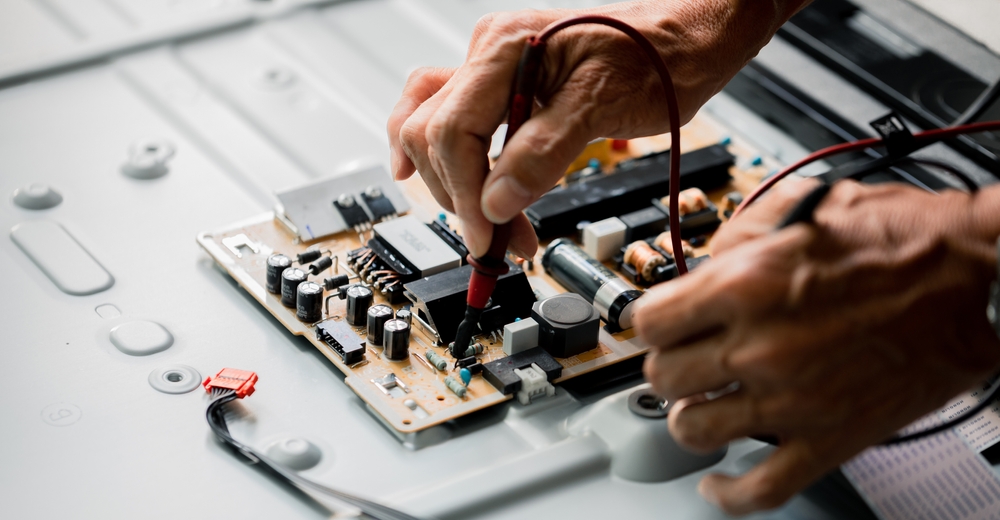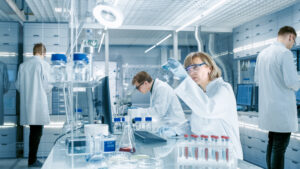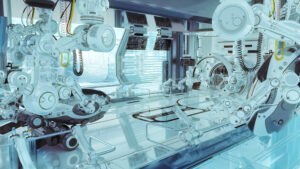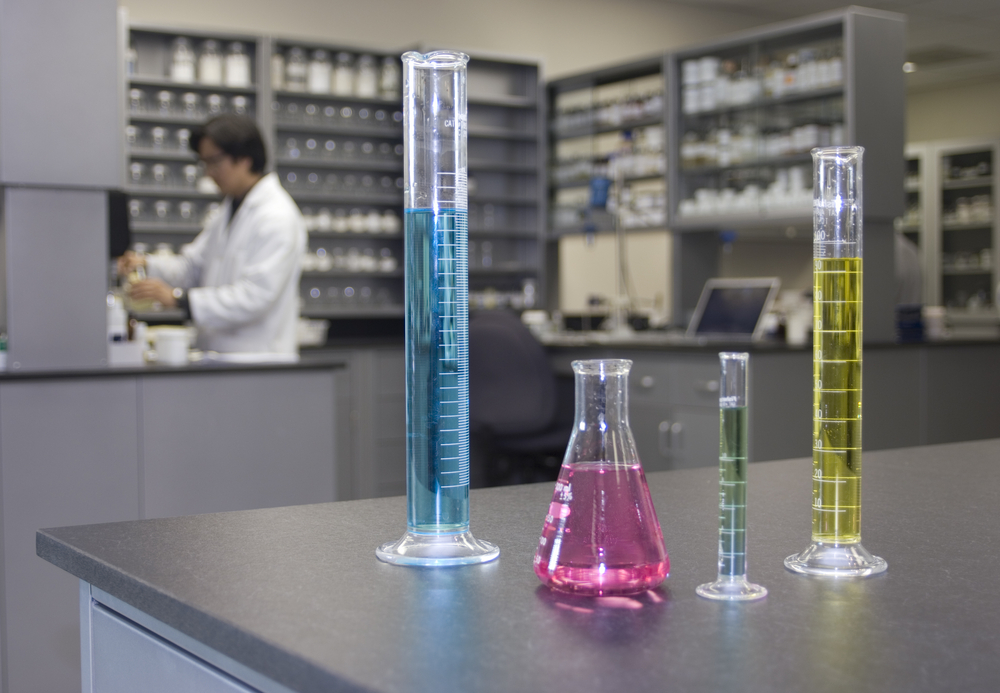
Lab counters are an essential component of any laboratory workspace, providing the foundation for a wide range of research and experimentation. Selecting the right materials and design for lab counters is crucial, as it can impact the efficiency, safety, and functionality of the workspace.
With various options available, from phenolic resin to stainless steel, each material offers unique advantages and considerations. This article will explore the different types of materials used for lab counters and laboratory design, their pros and cons, and the suitability for specific fields of lab work, helping you make informed decisions when designing your laboratory workspace.
Considerations for Lab Counter Design
Modern laboratories are increasingly designed to facilitate multiple fields of research and development under one roof. This trend reflects the growing interdisciplinary nature of scientific inquiry, where collaboration across different fields can lead to innovative discoveries.
By housing researchers from various disciplines in a shared space, these labs promote cross-pollination of ideas and expertise, fostering a more holistic approach to problem-solving. This integrated model also allows for the efficient use of resources and infrastructure, maximizing the potential for groundbreaking discoveries and advancements across multiple fields.
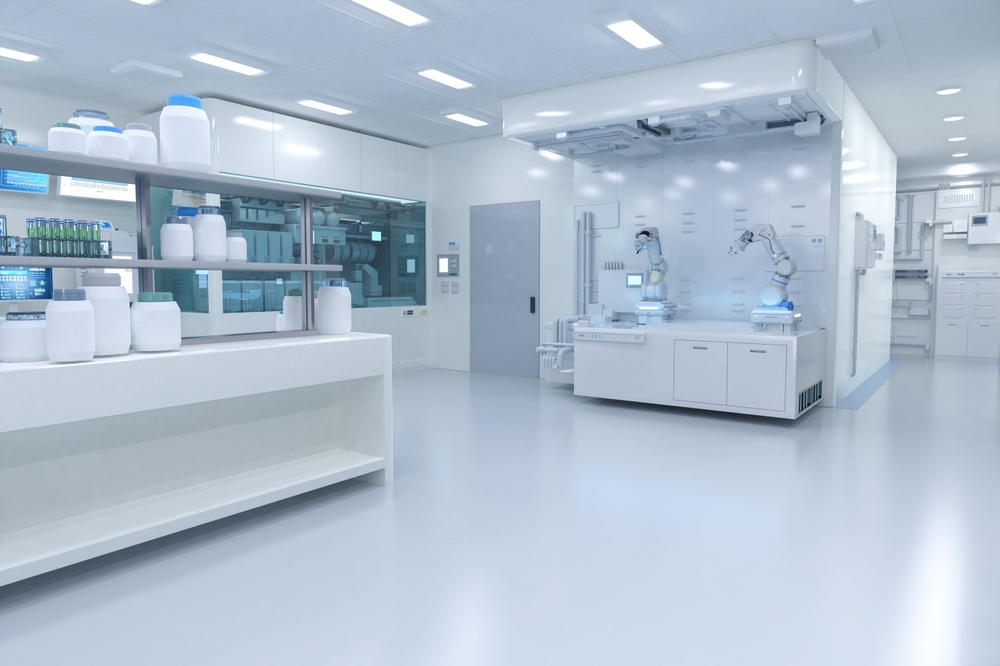
However, the diversity of laboratories requires several aspects to be considered when selecting the best materials and design for the different workspaces in a modern laboratory:
1. Function of the Lab Space
Consider how the lab counters will support the specific activities and research conducted in the laboratory, such as the need for specialized equipment, storage, or work surface requirements.
2. Size and Configuration of the Space
Ensure that the lab counters fit the dimensions and layout of the laboratory, considering the need for sufficient workspace and efficient use of available space.
3. Flexibility and Adaptability to Various Laboratory Needs
Choose lab counters that can be easily modified or reconfigured to accommodate changing research requirements or equipment setups.
4. Mobile or Stationary Lab Counters
If the design of your laboratory is constantly evolving, a mobile worktable or lab counter may turn out to be the most suitable solution for your environment.
Heavy-duty locking casters enable you to effortlessly maneuver your worktable throughout the laboratory and secure it in place once its temporary location has been determined.
However, if the design of your laboratory is not likely to change in the near future, a stationary workbench may be an ideal solution.
5. Specialized Equipment
Certain lab counters are specifically constructed to support and accommodate specialized laboratory equipment, such as microscopes, spectrophotometers, or centrifuges.
Anti-vibration benches, for instance, are imperative for equipment that necessitates stability and minimal disruption.
6. Accessories and Storage
Determine whether your lab counters require storage options such as drawers, shelves, or cabinets. An adequate storage solution can help keep an organized workspace.
Instrument mounts, power outlets, and task lighting are some of the accessories that can enhance functionality.
7. Personal or Collaborative Spaces
Depending on the nature of the research, consider whether the lab counters should be designed to facilitate individual workstations or collaborative work areas.
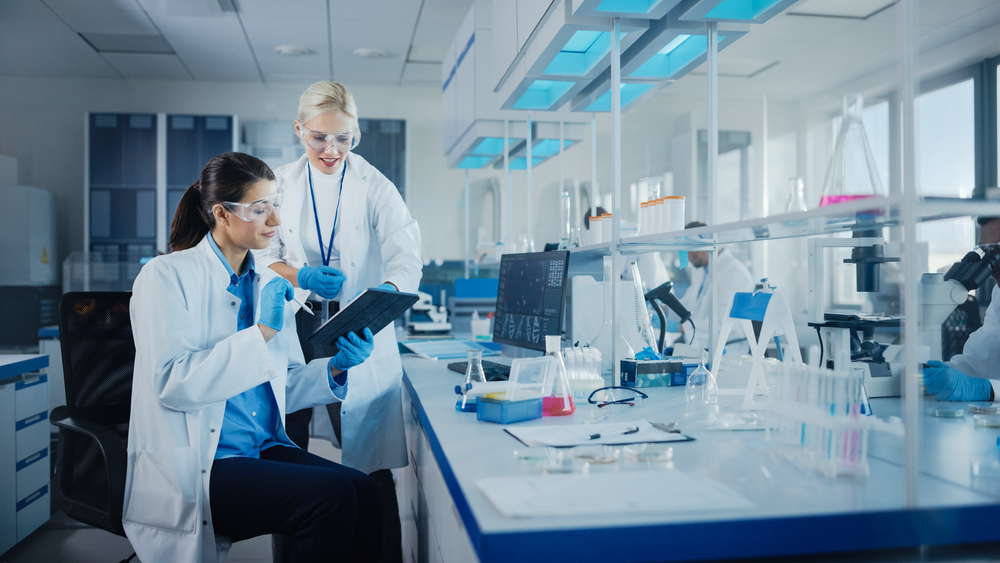
8. Ergonomics
Select lab counters that promote good ergonomic practices, such as adjustable height options to accommodate different users and reduce strain and fatigue.
9. Safety
In laboratory environments, durability is closely related to safety. Sturdy and solid lab counters reduce the chance of mishaps caused by collapsing, sagging, or unstable surfaces.
Certain types of composite materials or steel, which possess high-impact resistance, are capable of withstanding accidental bumps or knocks, preventing potential harm to laboratory personnel.
10. Compliance to Regulations
Ensure that the lab counters meet relevant safety and regulatory standards, including those related to chemical resistance, fire safety, and electrical requirements.
Additional Reading: Glass Wall Cabinets: Merging Aesthetics with Function in the Lab
Aspects that Matter in Lab Counter Material Selection
When selecting the material for lab counters, several factors should be considered to ensure they meet the specific needs of the lab environment. Here are some key considerations:
— Durability
The lab counters should be made of durable materials that can withstand the rigors of daily use, including exposure to chemicals, heat, abrasion, and physical impact.
— Chemical Resistance
Lab counters should be resistant to sulfuric acid, nitric acid, hydrofluoric acid, and other chemicals used in labs, to prevent damage and ensure safety.
— Cleanability and Maintenance
The lab counters should be easy to clean and disinfect to maintain a hygienic work environment.
— Non-Porous Surface
A non-porous surface on a lab counter helps prevent the absorption of liquids and chemicals, making the counters easier to clean and more resistant to staining.
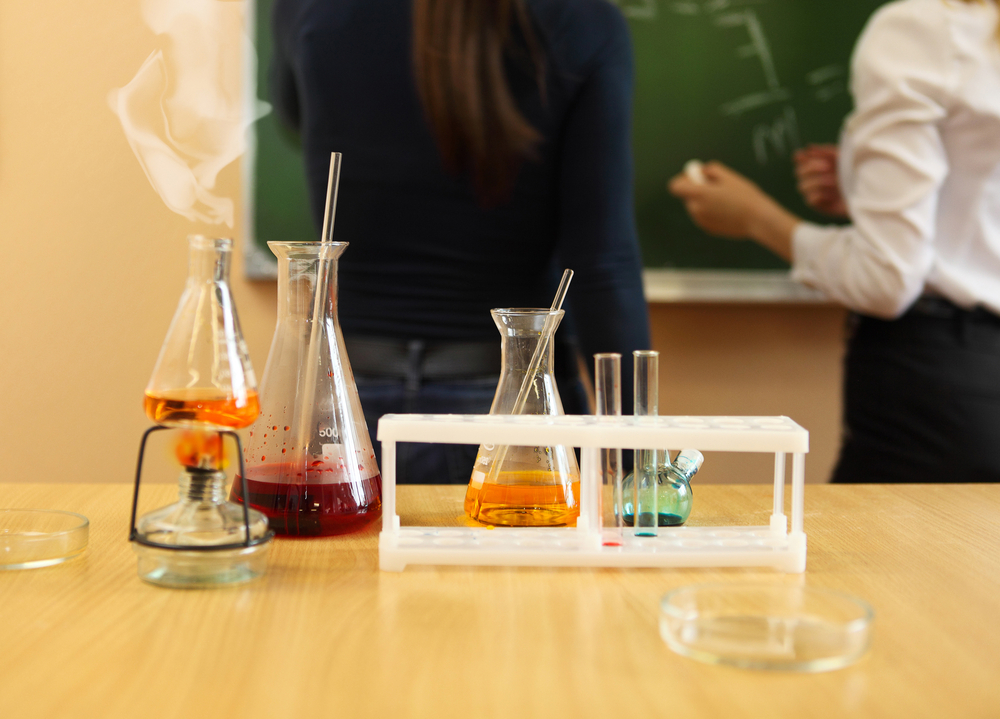
— Heat Resistance
Work counters in the lab should be able to withstand high temperatures to prevent damage from hot equipment or spills. Typical heat sources that can damage lab counters include Bunsen burners, hot plates, ovens, and open flames. These heat sources can cause discoloration, melting, or warping of the lab counter surface,
— Impact Resistance
The counters should be able to withstand physical impact because accidentally dropping heavy equipment or tools on the counter can cause cracks or chips, and sliding heavy equipment or containers across the counter surface can cause scratches or gouges.
Furthermore, incorrect use of tools can lead to dents or punctures, and collisions with furniture, such as lab benches or chairs, can cause damage to the edges or corners of the counter.
— Antimicrobial Properties
Some materials offer antimicrobial properties, which can help prevent the growth of bacteria and other microorganisms on the surface.
— Static control
For labs where static electricity is a concern, counters with static control properties can help mitigate this risk.
— Aesthetics
While functionality is key, the appearance of the counters can also be important, especially in areas that are visible to clients or visitors.
— Cost
Consider the initial cost of the counters as well as any long-term maintenance expenses associated with the material.
— Availability and Lead Times
Confirm availability before making your final decision. Supply delays can negatively impact various aspects of the project.
— Compliance
Ensure that the material of the counters comply with relevant safety standards and regulations, such as OSHA (Occupational Safety and Health Administration) guidelines.
By considering these factors, you can select laboratory workbench counters that are not only functional and durable, but also meet the specific needs of your lab environment.
Additional Reading: The Furniture Lab: Merging Design with Functionality in Laboratory Spaces
Lab Counter Materials
Selecting the appropriate countertop material for your lab counters is of significant importance, and there is quite a selection to choose from.
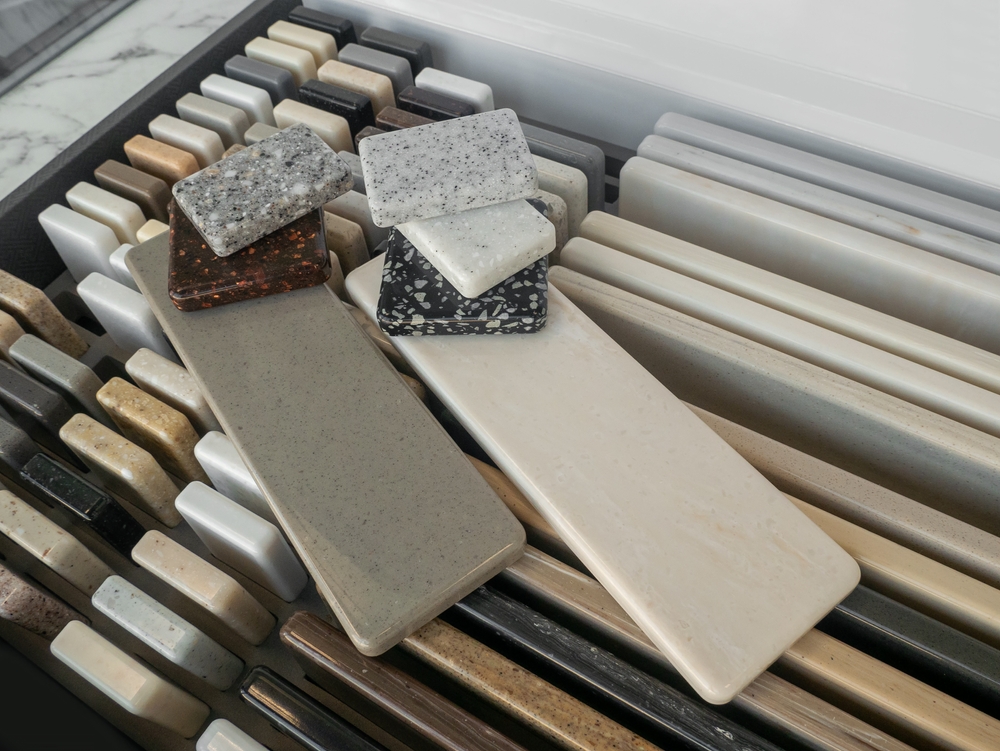
Here’s a breakdown of the available worktop materials for lab counters:
1. Epoxy Resin
Epoxy resin is a mixture of synthetic materials including silica, resin, filler, and a hardener which is cured as a solid product.
- Pros: Highly resistant to chemicals, heat, and moisture. Durable and easy to maintain.
- Cons: Can be more expensive than other materials. It can be prone to discoloration over time due to UV sensitivity.
- Suitability: Epoxy resin counter tops are ideal for types of labs where strong chemicals, high heat, and open flames, are paramount, such as medical, biological, chemistry, immunology, and microbiological labs.
2. Phenolic Resin
Phenolic resin is a lightweight material manufactured by layering natural kraft paper, drenched in phenolic resin and thermopressed in a high-heat oven to set.
- Pros: Highly resistant to chemicals, moisture, and impact. Low maintenance and easy to clean.
- Cons: Can be susceptible to scratching and high temperatures or flames. It can be prone to discoloration over time due to UV sensitivity.
- Suitability: Phenolic resin counter tops are suitable for analytical, biological, clinical, and chemical lab work, especially where moisture and chemical resistance is crucial. Additional to bench tops, phenolic resin is also used in the manufacturing of fume hoods, reagent shelving, and lab casework.
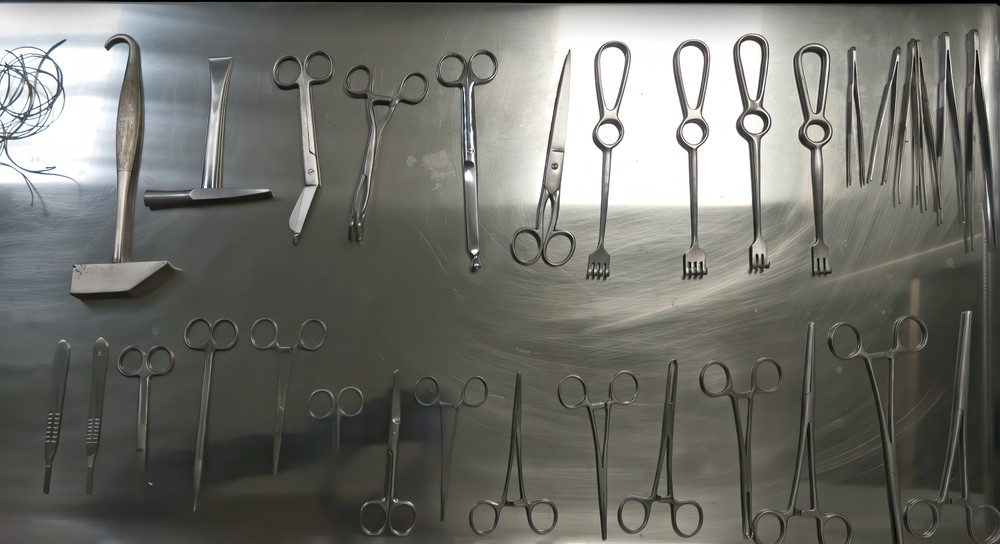
3. Stainless Steel (Brushed or Polished)
Stainless steel is a low carbon metal alloy of nickel and chromium. The two most common stainless-steel alloys used for lab counters are type 304 and type 316.
- Pros: Extremely durable and resistant to rust, corrosion, stains, and heat. It is also mold, chemical, and bacteria resistant. Easy to clean and maintain.
- Cons: Can be noisy and prone to scratching and denting.
- Suitability: Stainless-steel countertops are commonly used in sterile science lab environments such as medical or research labs, and also healthcare, food testing labs, veterinary sciences, and clean rooms where hygiene, non-contamination, and durability are critical.
4. High-Pressure Plastic Laminate
High pressure plastic laminate is a type of surface material that is made by compressing layers of resin-impregnated paper and wood fibers under high pressure.
- Pros: Cost-effective and available in a wide range of colors and finishes. Resistant to stains and impact.
- Cons: Not as durable or resistant to heat and chemicals as other materials.
- Suitability: Laminate countertops are suitable for dry labs with light to moderate use, such as technology and testing labs where cost-effectiveness and aesthetics are important.
5. High-Density Polyethylene (HDPE)
HDPE is made under controlled conditions by applying intense heat to petroleum through a process called extrusion. Ethylene, a hydrocarbon gas, is polymerized to form polyethylene pellets, which are then melted and formed in the desired shape and thickness. The extruded material is then cooled and solidified.
- Pros: Highly resistant to chemicals, moisture, and impact. Easy to clean and maintain, and a low-cost option.
- Cons: Can be prone to scratching and may not be as aesthetically pleasing as other materials.
- Suitability: Ideal for labs where chemical resistance and durability are essential, such as in pharmaceutical or food testing labs.
6. Chemical Resistant Laminate
Chemical resistant laminate is a core of phenolic resin coated kraft paper, covered with a layer of decorative surface paper, and an outer layer of synthetic resin.
- Pros: Reasonably resistant to chemicals and moisture. More cost-effective than some other materials.
- Cons: Can be less durable than other options and may be prone to scratching and other damage from sharp objects, moisture damage, swelling, and delamination.
- Suitability: Suitable for general light-duty lab work where moderate chemical resistance is needed, e.g., pathology, dental, cosmetics, and photographic labs.
7. ESD Laminate
Electrostatic Dissipative (ESD) laminate is a type of laminate that reduces static electricity on work surfaces. ESD laminate is made of high-pressure laminate with a carbon layer that dissipates static.
- Pros: Provides electrostatic discharge protection. Chemicals and moisture resistant. It also resists staining and chemicals like acetone, gasoline, and 10% ammonium solutions.
- Cons: May be more expensive than other materials and can be prone to scratching.
- Suitability: ESD laminate lab counters are an excellent choice for labs working with sensitive electronic equipment or explosives, where ESD protection is critical.
8. Solid Surface
Solid surface is a synthetic material that is made from a combination of acrylic, polyester, and other materials used to create decorative seamless work surfaces.
- Pros: Seamless and non-porous surface that is resistant to stains and bacteria. Easy to clean and maintain.
- Cons: Can be less resistant to heat and scratches than other materials.
- Suitability: Particularly suitable for lab work in environments where cleanliness is crucial, such as medical, research, and food testing laboratories due to their seamless and hygienic surface.

9. Butcher Block
Butcher block is a type of wood surface that is made by laminating hard wood planks together, typically maple wood.
- Pros: Warm appearance and natural feel. Durable and resistant to heat and impact.
- Cons: Requires regular maintenance, including oiling, to prevent staining and warping.
- Suitability: Because wood is naturally porous, butcher block countertops are most suitable for lab counters where a natural aesthetic is desired, such as in educational or food labs, manufacturing plants, robotics labs, and 3-D printing rooms where harsh chemicals are not used.
10. Stone
Stone lab counter tops are made from natural stone such as granite, marble, or quartz.
- Pros: Extremely durable and resistant to heat, chemicals, and bacteria. Available in various colors and finishes.
- Cons: Can be expensive and heavy. Requires sealing to maintain resistance to stains and bacteria.
- Suitability: Suitable for high-end labs where aesthetics and durability are important, such as in forensic or geological labs.
11. Ceramic
Ceramic lab counter tops are made from clay that has been fired at high temperatures in kilns, giving it a smooth finish that never needs sealing.
- Pros: Extremely durable and scratch resistant. Ceramic is also resistant to stains, heat, moisture, chemicals, and scratches. Non-porous and hygienic.
- Cons: Can be expensive and heavy. Furthermore, ceramic is brittle, and particular care to prevent chips and cracks is essential during shipping and installation. Ceramic work tops may require professional installation.
- Suitability: Ideal for laboratory countertops where high durability and resistance to heat and chemicals are essential, such as in materials science or analytical chemistry labs.
Additional Reading: Choosing the Right Lab Benches for Your Research Needs
Conclusion
Choosing the right material and design for your lab counters is essential for creating a safe, efficient, and functional workspace. Whether you prioritize chemical resistance, durability, or aesthetics, there are numerous options available to meet your needs.
By considering the function of the lab space, size and configuration, flexibility, ergonomics, and compliance with regulations, you can select the best material and design for your laboratory counters.
With the specialized guidance of the lab design team at Genie Scientific, along with careful consideration and planning, you can create a workspace that supports your research and experimentation needs for years to come.

